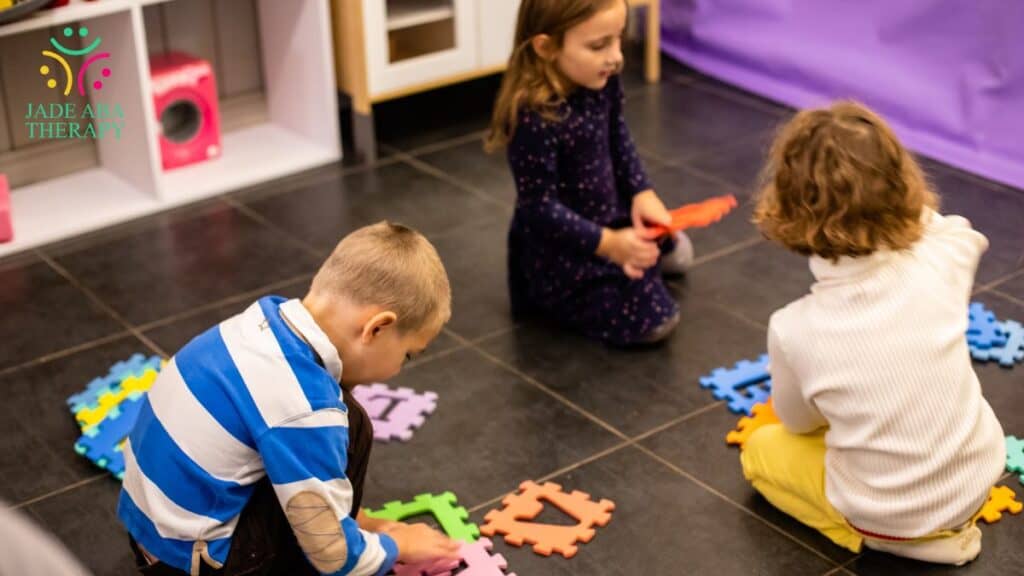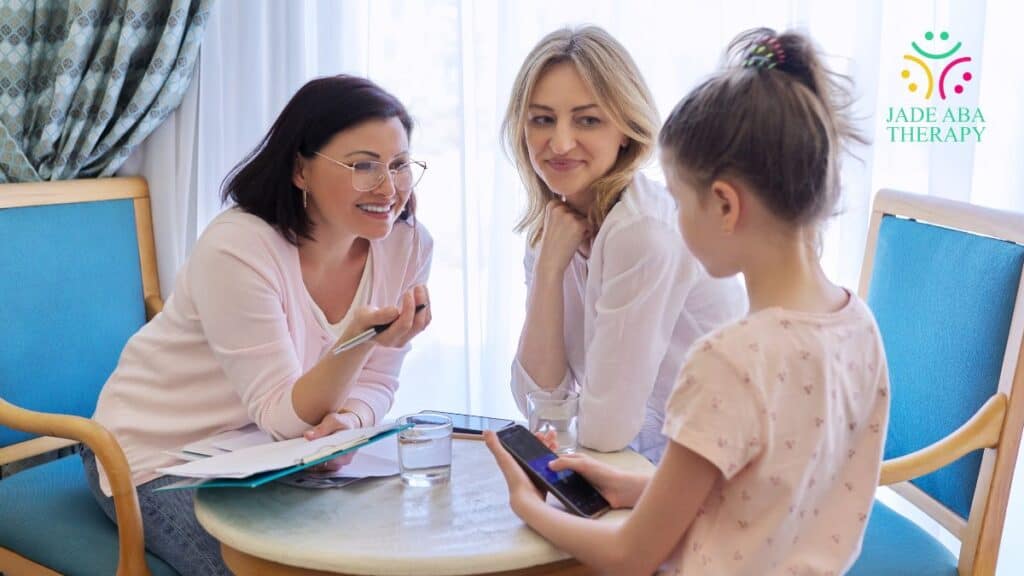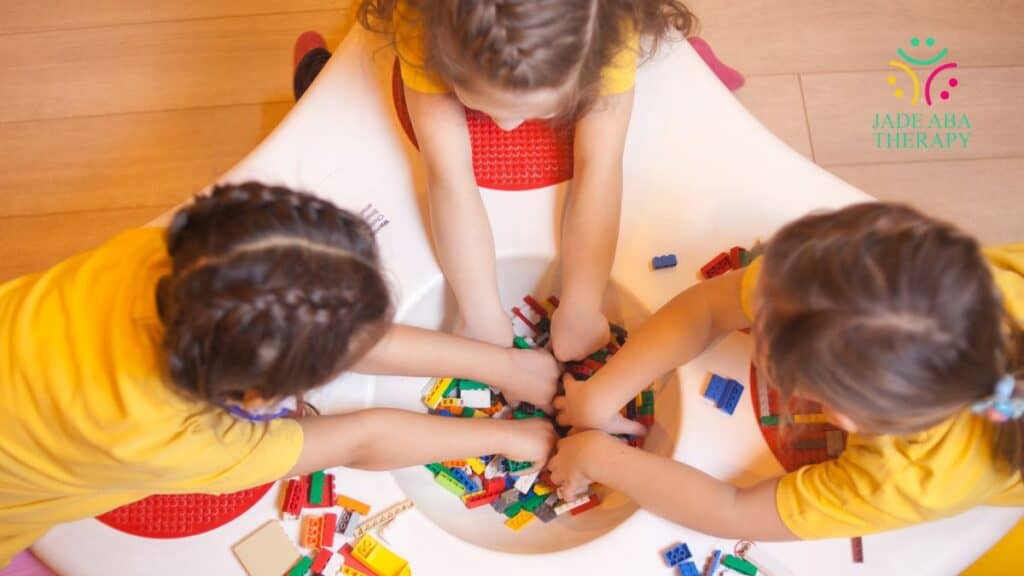Key Points:
- Home vs center ABA compares how therapy works in real routines versus structured clinic spaces.
- Home-based sessions build skills within daily life, while center-based programs add peer practice and close team supervision.
- The right mix depends on your child’s goals, environment, and schedule.
New skills help most when they show up at home, at school, and in the community. That push raises a practical choice many parents face early: Home vs center ABA. The same science guides both settings. The difference lies in how sessions run, who joins in, and how fast skills carry over to daily life.
The sections below show how each option works, what to expect week to week, and how to choose a starting point that fits your child and your schedule.
What Does Each Setting Actually Look Like?
Home-based ABA brings the clinician to the living room, kitchen, or backyard. Sessions use real routines like mealtimes, dressing, and homework to build communication, play, and daily living. Caregivers learn the same strategies, then practice between visits. Generalization grows because teaching happens in the same rooms where skills need to show up.
Center-based ABA runs in a clinic designed for therapy. Rooms hold tables, pretend-play corners, sensory items, and small-group spaces. Schedules block focused learning segments, peer practice, and planned breaks. Therapists have quick access to colleagues for coaching and team adjustments.
Expect these shared elements across both settings:
- Board Certified Behavior Analyst (BCBA) designs goals and supervises care.
- Registered Behavior Technician (RBT) delivers the most direct hours.
- Caregiver training weaves through the plan to keep gains moving.
Helpful contrasts to weigh:
- Environment control. Center teams control distractions more easily. Home teams teach through natural distractions that your child already faces.
- Peer practice. Center programs schedule structured peer time. Home programs add peer time through sibling playdates or community outings.
- Caregiver role. Home programs ask for more in-session participation. Center programs often shift practice to after-session routines at home.
A quick search note for parents: queries like “center based ABA therapy near me” and “ABA therapy home based vs center” lead to provider pages and location lists. “In home ABA vs center-based” also shows side-by-side comparisons you can scan before scheduling an intake.

Home vs Center ABA: Which Setting Fits Your Child Best?
Home vs center ABA fits different profiles. The better match depends on behavior goals, sensory needs, travel time, and how much coaching you want during ordinary routines.
Home-based ABA may fit when:
- Challenging moments cluster around mealtime, bedtime, or homework.
- Communication goals tie to asking for help, choosing snacks, or sharing toys.
- Travel raises stress or cuts available hours.
- Caregivers want live coaching on their own routines.
Center-based ABA may fit when:
- A quiet, structured room helps early learning take hold.
- Peer interaction and group readiness sit high on the goal list.
- Team supervision and quick equipment access support behavior plans.
- Family schedules align with clinic hours and commute time.
Balanced approaches also work. Many families run center hours for concentrated teaching and add home hours for carryover. A BCBA can map which targets benefit most from each setting, like teaching new requests at the center and practicing mealtime routines in the kitchen.
A scale point for planning: researchers reviewing Early Intensive Behavioral Intervention suggest program intensity in the 25–40 hours per week range over 12–24 months for many children, adjusted by need and response. Keep in mind that intensity is not a rule for every child; teams individualize hours.

Daily Life Impact: Routines, Peers, and Progress
Families care about what changes Monday through Friday. Here is how the two settings shape daily life.
Routines and carryover
- Home sessions turn real routines into practice. A request during breakfast, a transition to bath time, and a bedtime story become teaching moments.
- Center sessions introduce skills in a staged way and send home practice plans. Caregivers apply the same strategies later that day.
Social exposure and group readiness
- Center programs script peer play, sharing, and small-group instruction. Group readiness grows through planned circle time and turn-taking games.
- Home programs build peer goals through siblings, neighborhood friends, and community trips. Teams schedule playground visits or library time to rehearse skills.
Sensory and behavioral supports
- Centers adjust lighting, seating, and materials quickly. If a behavior plan needs a visual boundary or a new activity, staff swap tools on the spot.
- Homes present the exact triggers and cues your child sees every day. Teaching replacement behaviors in that setting often shortens the gap between practice and real-world use.
Caregiver training and time
- Home sessions embed caregiver coaching live. Parents learn to prompt, reinforce, and fade help while a clinician watches and gives feedback.
- Centers often schedule structured caregiver trainings and then assign home practice, aligning with parent education in autism. Some clinics offer parent workshops or remote check-ins.
A national view helps frame demand and access. The CDC estimates that about 1 in 31 8-year-olds in monitored U.S. communities meet criteria for autism. That number shapes waitlists, staffing, and scheduling across both settings.
Outcomes to Expect: Skill Growth and Generalization
Outcomes depend on goal selection, dosage, and caregiver follow-through. Both home and center programs use the same core methods: breaking complex skills into smaller steps, prompting, and reinforcing success.
Where home-based ABA tends to shine
- Generalization from day one, since practice happens in the exact rooms where skills are needed.
- Coaching for routine-specific problems like picky eating, morning transitions, or toileting.
- Flexible scheduling when short, frequent sessions fit attention span better.
Where center-based ABA tends to shine
- Dense, uninterrupted teaching blocks that build early attending and imitation.
- Planned peer interactions that prepare for daycare or school.
- On-site clinical oversight for fast plan adjustments.
Shared outcome drivers
- A clear data plan with consistent data collection keeps teams aligned; teams chart trials, successes, and prompt levels daily.
- Consistency across people. Teachers, therapists, and caregivers use the same responses.
- Parent training. Studies of structured parent training programs show larger improvements in disruptive behavior than education alone, which supports any setting that invests in caregiver coaching.

Cost, Coverage, and Scheduling Realities
Coverage rules shape choices. The good news is that all 50 U.S. states have enacted laws requiring insurance coverage for ABA therapy and other autism-related services in state-regulated plans, though details vary.
Families still need to check plan type, prior authorization, and any hour caps or age limits, including Medicaid coverage in Maryland where applicable.
Cost variables to ask about
- Assessment codes, supervision time, and direct therapy hours billed.
- Travel fees for home sessions if your plan does not include them.
- Group programming and clinic fees for center programs.
- Cancellation and no-show policies for both settings.
Scheduling tips
- Ask intake teams for current start dates for home vs center tracks.
- Request a draft weekly template before authorization to spot conflicts.
- Plan caregiver training slots up front so practice stays consistent.
While researching, you may run across unrelated queries like “center based ABA therapy jobs” or “ABA therapy careers.” Those pages help job seekers and explain roles and credentials. They can still be useful for understanding who might work with your child day to day and what training those roles require.

How To Choose: A Simple Decision Framework
Choosing home vs center ABA gets easier when you rank the must-haves and trade-offs. Use this quick framework with your BCBA during intake.
1. List top three behavior goals for the next 90 days
- Examples: requesting help, sitting for circle time, sharing with a sibling.
2. Map each goal to the stronger setting
- New learning that needs tight control often starts faster at the center.
- Routines tied to your kitchen, bathroom, or bedroom often change faster at home.
3. Set a starting schedule and a review date
- Agree on hours, caregiver training frequency, and peer time.
- Schedule a 6–8 week review to compare data and adjust the mix.
4. Plan for school alignment
- Share the ABA goal list with teachers.
- Align reinforcement and prompting across settings so skills do not stall.
If you use a smart-home app and you see search results for “home assistant scene vs automation” or “home assistant scenes vs automations,” know that these pages discuss device rules, not therapy planning. Skip those links and focus on autism therapy sources and provider pages.
Practical Pros and Cons (At-A-Glance)
Home-based ABA
- Real-life practice across meals, chores, and play.
- High caregiver coaching inside daily routines.
- Less travel time and fewer cancellations due to traffic.
- Fewer built-in peer opportunities unless planned.
Center-based ABA
- Structured rooms that reduce distractions and speed early learning, complementing foundational ABA therapy facts families often review at the start.
- Scheduled peer practice to build group readiness.
- Immediate access to materials and team supervision.
- Commute time and set clinic hours to plan around.
Search variants like “in home vs center ABA therapy” and “ABA therapy home based vs center” often lead to checklists like the one above. Use them to prepare questions for your intake call.

Frequently Asked Questions
Is in-home ABA therapy worth it?
In-home ABA therapy supports skill development inside real-life routines like meals, dressing, and chores. Families benefit from reduced travel and live caregiver coaching, which improves skill transfer. Starting at home provides natural context, while structured center hours can be added later to build peer interaction without losing home progress.
At what age do you stop ABA therapy?
ABA therapy ends when goals are met and skills generalize across settings with minimal prompts, not at a fixed age. Most families reduce hours as children grow, transitioning to school-based support or consultation. Early years focus on intensive intervention, while later stages target refinement and independence through regular plan reviews.
Is in-home ABA therapy covered by insurance?
In-home ABA therapy is often covered by insurance when tied to an autism diagnosis, but coverage depends on plan type, state laws, and prior authorization. State-regulated plans must cover autism services, though age limits and caps vary. Always confirm benefits, copays, and hour limits with the provider’s billing team before starting.
Choose Your Starting Point And Build From There
A clear plan beats a perfect setting. Start where your child can gain momentum fastest, then adjust the home vs center ABA mix as data show progress across routines and peer settings. Consistent caregiver training and aligned school strategies keep gains moving week to week.
In-home ABA therapy in Virginia and Maryland can start with a focused assessment, a goal list tied to real routines, and a schedule you can keep. Jade ABA Therapy integrates caregiver coaching and school collaboration so new skills show up where life happens.
If you want a program that grows with your child and your week, reach out to plan a start date and ask what the first 30 days will look like.




